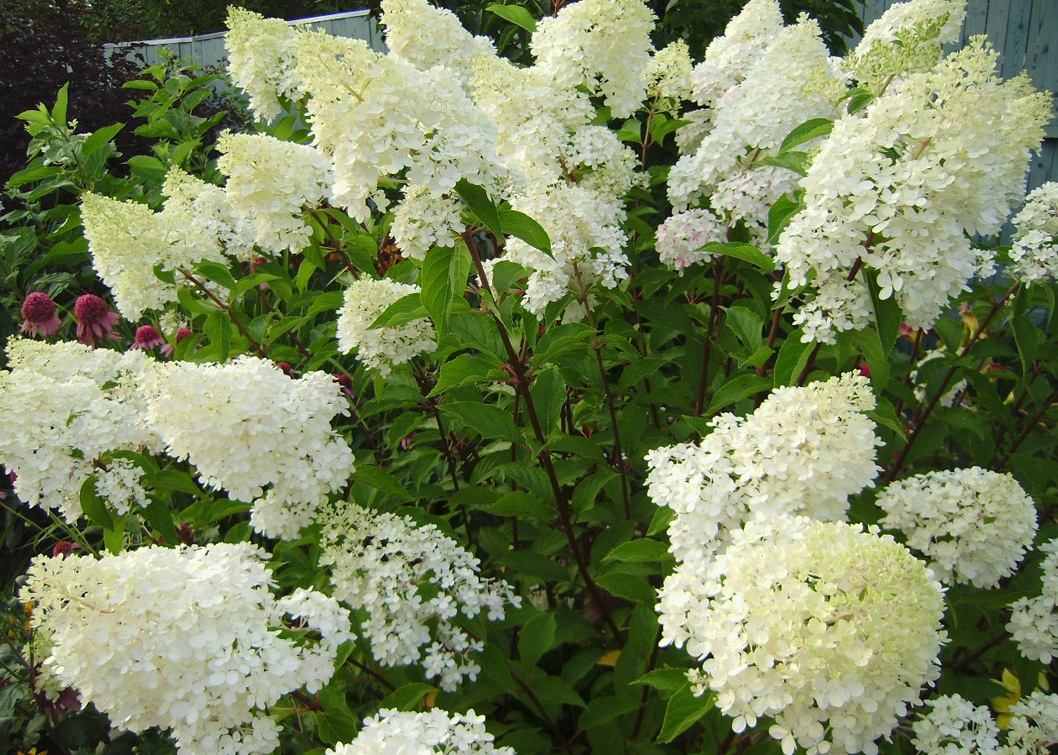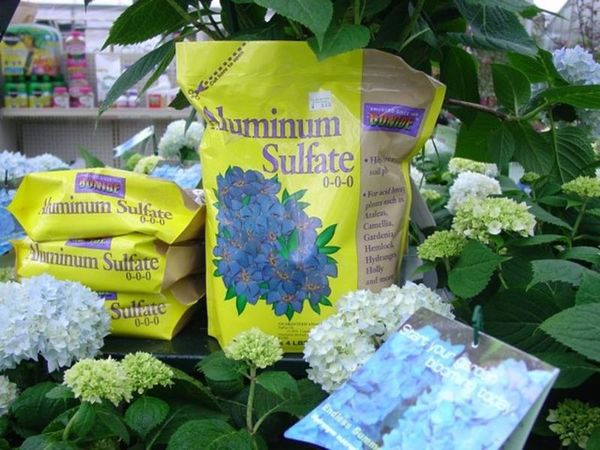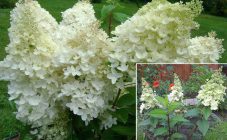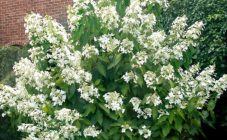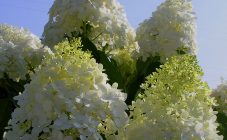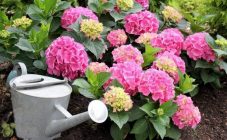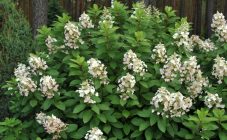Content:
It is rare to find a plant with lush flowering and unpretentious care. This is the Phantom hydrangea. Gardeners choose it because of its lush flowering and relative unpretentiousness, but they are often afraid that they will not be able to grow this variety on their land. However, looking after her is easy.
Characteristic features of the Phantom hydrangea
This type of hydrangea is not only beautiful, but also resistant to fungal root diseases. The Phantom hydrangea grows quickly after pruning and can be shaped like a bush. It is possible to grow the Phantom hydrangea on a trunk as a tree.
Among all types of hydrangeas, this shrub is a long-liver. Its life cycle lasts over forty years. It is a very hardy plant. He is not afraid of either bad soil or bad weather.
Description of the variety
Panicle hydrangeas have long been cultivated in eastern countries. In the 18th century, breeders took up them. As a result of their work, a bush with amazing frost resistance and beauty was obtained.
Hydrangea paniculata Phantom grows up to 2.5 meters in height. One bush covers an area of about two meters. Branches are strong, grow straight up, colored brown with a shade of red. The leaves are green, large, with a pointed apex and a jagged edge.
Bud formation begins at the end of June and continues until the end of October. The flowers are large, collected in a dense pyramid. Inflorescences grow up to 35 cm in length. Creamy at the beginning of flowering, turning pink over time. The buds are formed from July to September. The barren flowers give off a subtle honey scent that can be felt far from the plant. Cut brushes stand in water for a long time.
Hydrangea Phantom prefers fertile lands with good moisture. Grows poorly outdoors in direct sunlight. Strong winds will also harm the bush.
The breeders managed to preserve the natural frost resistance of the Phantom hydrangea. Although it can withstand frosts down to -25 degrees, the plant should be covered in areas with harsh winters. A plant protected from cold weather will overwinter in a frost of -40 degrees.
Planting hydrangeas
Hortense Phantom is planted in open ground in April-May, after the frost stops. Preparation of the landing site begins two weeks before the expected landing date. A hole 50 × 60 cm in size is dug in the chosen place, the hole must be at least 40 cm deep. Nutrient soil mixed with peat is poured into it. The earth is watered and left to shrink. The soil should be neutral or acidic.
This species is propagated only by cuttings or layering. The roots of the selected seedling are straightened and carefully sprinkled with earth.
When all the roots are covered with earth, it is lightly tamped and the plant is watered abundantly. When watering, make sure that the roots are not exposed under the pressure of water.
When transplanting a purchased seedling, the planting procedure is even easier. The plant is carefully removed from the pot along with an earthen lump, placed in a prepared hole and covered with earth.
The plant takes root well in the open field.The emergence of new leaves on the branches speaks of rooting.
Plant care
Hydrangea Phantom is unpretentious, but to maintain lush flowering, care rules should be taken into account. The main care for this variety is watering, feeding and pruning.
The Phantom hydrangea loves watering abundantly but infrequently. Water it once every two weeks after the topsoil dries up. Depending on the age of the plant, from 10 to 20 liters of water is poured under one bush. To maintain moisture at the desired level, the root circle can be mulched.
Top dressing of bushes is carried out during watering or immediately after it. In the spring, nitrogenous fertilizers are applied, and during the formation of buds, complex fertilizers with potassium and phosphorus content are used. Organic fertilizers such as humus, manure and compost are also useful for hydrangeas.
When growing this beauty, you should monitor the density of the bush. When thickened, the Phantom blooms worse and loses its attractiveness.
Pruning is carried out twice a year. Sanitary pruning is carried out in the spring. During it, frozen, damaged branches are removed. But at the end of October, remove all faded inflorescences and shorten the shoots by 3-5 buds.
To rejuvenate the bush, it should be cut almost completely, as gardeners say, “under the stump”. In the spring, new branches will develop from the sleeping buds and the shrub will become even more luxuriant.
Proper planting and caring for the phantom hydrangea in the open field will ensure a long and spectacular flowering of the plant.
Diseases and pests
The phantom is rarely affected by disease. Almost all changes in the appearance of leaves are related to the environment.
- With excess water, very low acidity and when grown in direct sunlight, hydrangea leaves turn yellow.
- Lack of water and nutrients leads to leaf fall.
- If you water the plant with hard water, dry, dark spots appear on the leaves.
- During spring frosts, wet darkening may appear due to temperature changes.
- If the plant is planted in alkaline soils, its leaves turn pale. This disease is called chlorosis. After watering the plant with a solution of citric acid with iron, the situation improves.
There are several fungal diseases that can affect this hydrangea variety.
- Gray rot;
- Septoria;
- Rust.
The first step after detecting any of these diseases is to remove the affected leaves and branches. After that, the bush is treated with an antifungal drug.
Of insect pests, the plant is most often attacked by:
- Aphid. It sucks sap from plants and slows down growth. Aphids are washed off with a stream of water. In case of severe damage, they are treated with BI-58, Confidor, Fufanon.
- Spider mite. It can be identified by a thin web on the leaves. Tyofos and Fufanon will help to destroy it.
- Slugs. From them, a Molluscoid is laid around the bush.
Use in landscape design
Hydrangea Pan Phantom is most often used in group plantings, when creating hedges and compositions with conifers. With the help of a trunk, you can form a flowering tree at a resting place or create a light frame for park and garden paths.
Planting and growing Phantom hydrangea on the plot, the gardener will feel pride in his plot. Subject to the rules of planting and care, the plant will delight its owners not only with beautiful flowers, but also with a delicate aroma.
